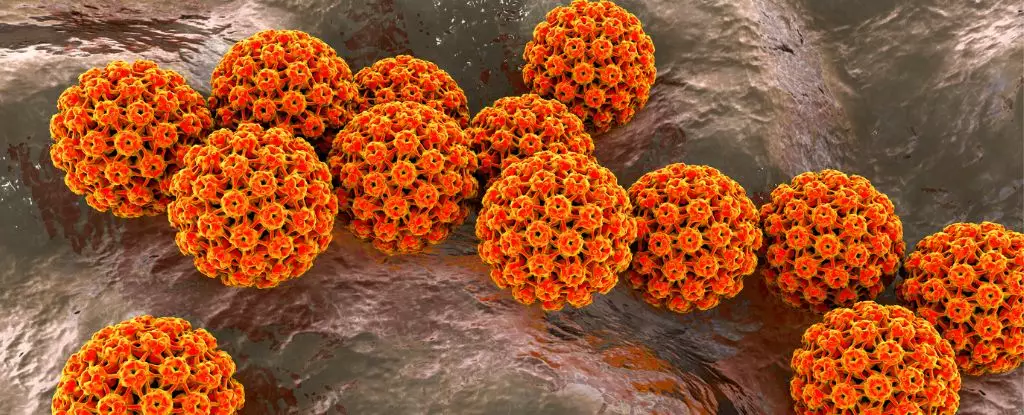Recent studies have shed light on a critical health issue: the risk that men face from oral human papillomavirus (HPV) throughout their lives. As the incidence of oropharyngeal cancers—cancers of the throat and mouth—continues to rise, especially in regions like the United States and Europe, it becomes increasingly clear that preventative measures, particularly vaccination, must be revisited. The findings indicate that not only young men but middle-aged men who missed earlier vaccination opportunities are at risk, underscoring the necessity for a more inclusive vaccination strategy.
Unlike prior assumptions that limited the risk of HPV to younger age groups, the new research highlights that men remain susceptible to contracting new strains of HPV into their later years. This new evidence, gathered from studies conducted in the United States, Brazil, and Mexico, suggests that the possibility of becoming infected with a cancer-causing HPV strain does not diminish with age—a critical insight that could influence future public health policies.
The Dangerous Surge of Oropharyngeal Cancers
What’s particularly alarming is the alarming increase in oropharyngeal cancers, which are now recognized as an epidemic in certain parts of the world. Unlike cervical cancers, which have seen significant declines due to widespread vaccination among women, oropharyngeal cancers predominantly affect men, often without traditional risk factors such as smoking or drinking. The correlation between oral HPV infections and rising cancer rates cannot be ignored—particularly since strains like HPV-16 and HPV-18 are implicated in up to 90% of oral cancer cases.
Despite the presence of a highly effective vaccine designed to combat HPV strains responsible for these cancers, vaccination rates among young males are markedly lower compared to their female counterparts. A significant concern arises: as cervical cancer rates drop due to vaccination, why are illnesses like oropharyngeal cancer on the rise?
The guidelines set forth by the Centers for Disease Control and Prevention (CDC) recommend vaccination against HPV for all young people up to age 26, yet it only extends to those above that age under specific circumstances, such as immunocompromised individuals. This policy may inadvertently leave a significant portion of the male population vulnerable to HPV, given the persistent risk of exposure. A shocking reality is the likelihood that many men in the 27-and-older demographic remain unprotected against a preventable infection that can have severe outcomes.
Critics argue that this could require a reevaluation of current vaccination recommendations. The assumption that individuals over 26 years old have already been exposed to HPV and thus have limited potential benefit from vaccination is not universally true. This long-standing notion may need to be reconsidered in light of new findings indicating ongoing susceptibility to oral HPV.
Interestingly, prior studies have often overlooked various modalities through which oral HPV can be transmitted. While most research has focused on anal or genital sexual practices, the risk of spreading the virus through casual contact, such as skin-to-skin interaction, is significant and has been understated. Men should be educated about the various transmission pathways to mitigate risks associated with oral HPV.
The comprehensive study led by researchers at Moffitt Cancer Center, which analyzed oral gargle samples from over 3,000 healthy men, discovered a notable prevalent rate of HPV within the sample cohort. Alarmingly, nearly 20% had existing HPV infections, with close to 6% carrying a strain linked to cancer. This stark reality highlights the necessity for ongoing awareness and vigilance against oral HPV infections, emphasizing that no one—regardless of age—is truly safe from the virus.
In light of these findings, it is paramount for public health strategies to be revised to address the urgent need for increased vaccination coverage among men, particularly those beyond their late twenties. The research advocates for tailored vaccination approaches to better target populations with higher risks.
Epidemiologists, including lead researcher Anna Giuliano, stress the importance of public awareness campaigns focusing on the risks associated with HPV and the significance of vaccination for all males. The consistently high rates of HPV acquisition across diverse age groups coupled with regional healthcare disparities call for a cohesive action plan.
In sum, as our understanding of oral HPV evolves, so too must our preventative strategies to combat the surging rates of HPV-associated cancers. Comprehensive vaccination could be a crucial step toward decreasing these concerning trends and safeguarding men’s health for generations to come.


Leave a Reply